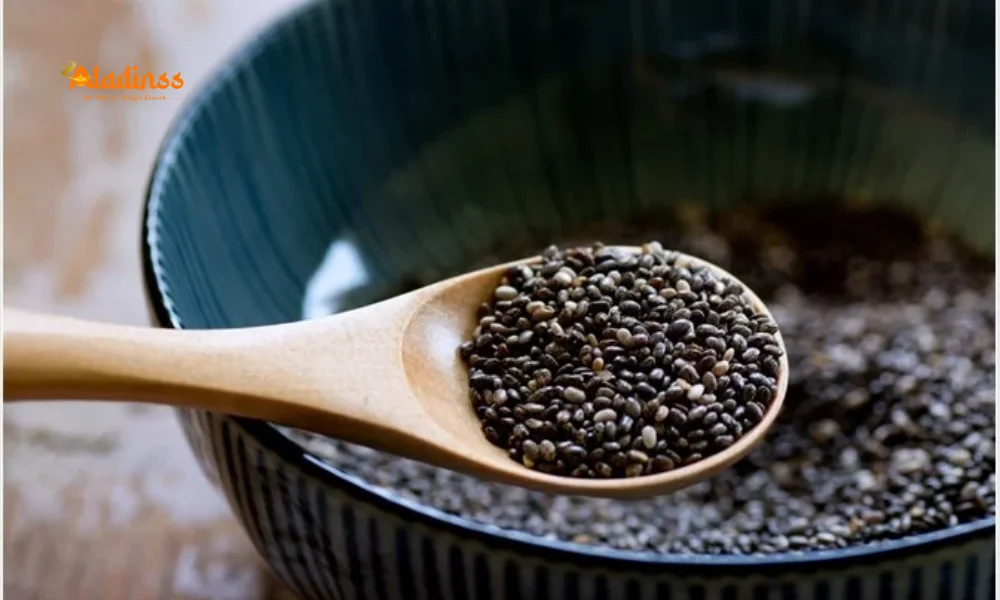Garlic on Empty Stomach: Ayurvedic Benefits
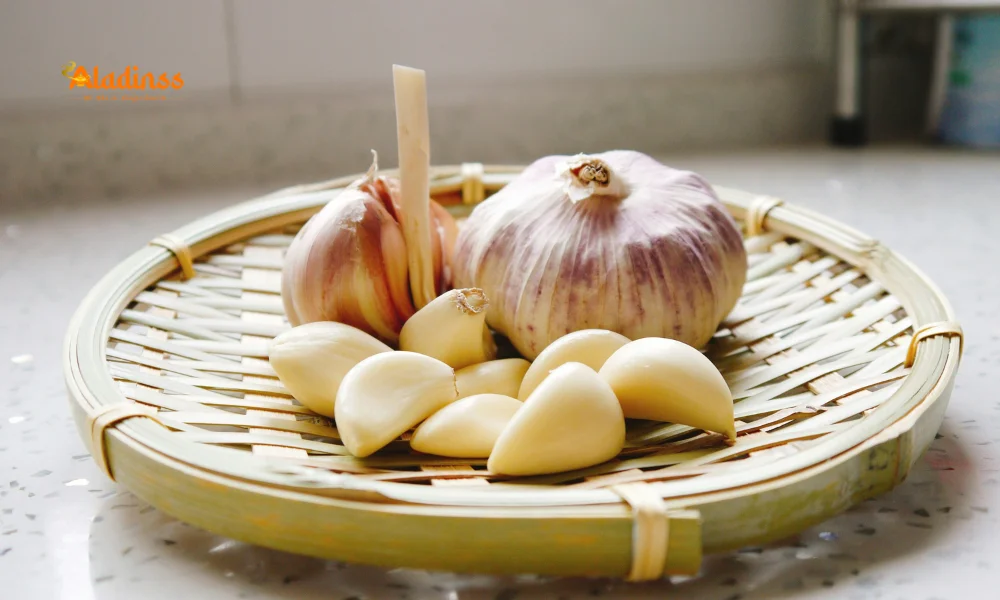
Benefits of Eating Garlic on an Empty Stomach: Ayurvedic Insights
Garlic, a staple in Indian kitchens, is revered in Ayurveda for its potent medicinal properties, including stimulating digestion, boosting immunity, and detoxifying the body. Consuming raw garlic on an empty stomach is believed to amplify these benefits, but is it suitable for everyone? Dr. Mohammad Faisal, an expert from STM Ayurveda College, explains how Ayurveda views this practice and offers guidance on safe consumption. This article explores the health benefits, precautions, and Ayurvedic recommendations for eating garlic on an empty stomach to promote a disease-free life in 2025.
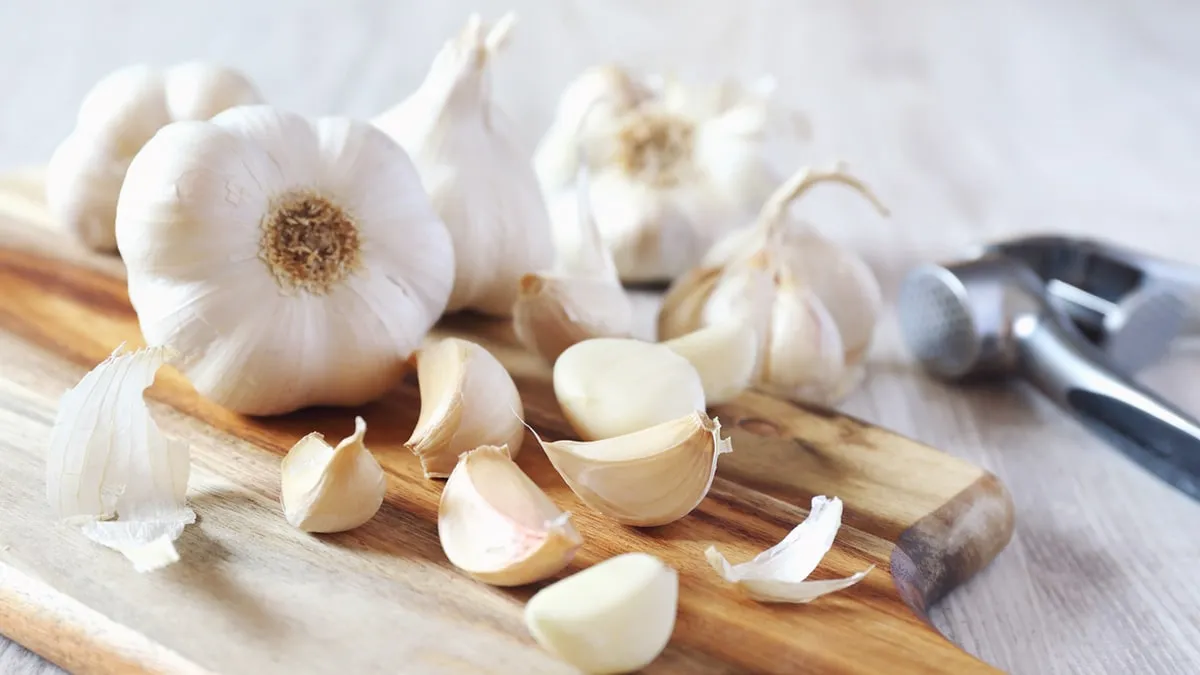
Ayurvedic Perspective on Garlic Consumption
In Ayurveda, food is medicine, and the timing of consumption is critical for maximizing benefits. Dr. Mohammad Faisal explains that Ayurveda divides medicine administration into 10 periods, with Abhaktha (on an empty stomach) and Pragbaktha (before meals) being key for certain remedies. Eating raw garlic on an empty stomach falls under Abhaktha, as it allows the body to absorb its active compounds, like allicin, more effectively. Garlic’s pungent and heating qualities stimulate agni (digestive fire), promoting digestion and detoxification.
However, Ayurveda emphasizes individual constitution (prakriti) and current health state. Garlic’s warming nature suits those with strong digestion or conditions like high blood pressure or obesity, but it may aggravate Pitta dosha in some, causing issues like heartburn or skin irritation. A 2019 study in the Journal of Ethnopharmacology highlights garlic’s antimicrobial and anti-inflammatory properties, supporting its use in Ayurveda for boosting immunity and fighting infections when consumed correctly.
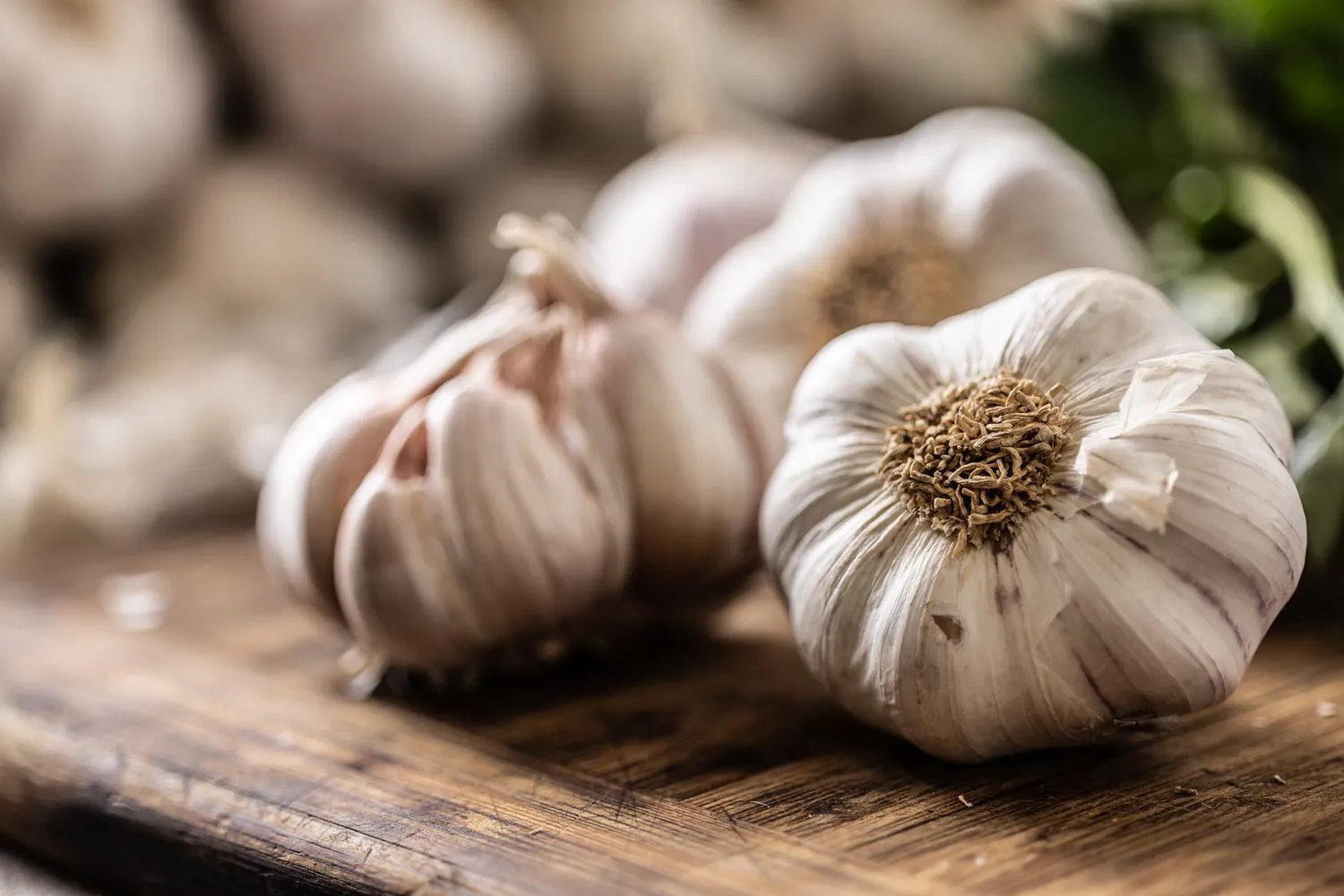
Health Benefits of Garlic on an Empty Stomach
Eating raw garlic first thing in the morning can amplify its therapeutic effects. Here are the key benefits:
Boosts Immunity: Garlic is rich in allicin, a sulfur compound with antimicrobial properties. A 2020 study in Food Science & Nutrition found that garlic enhances immune cell activity, helping fight colds, flu, and infections. Consuming it on an empty stomach maximizes allicin absorption, strengthening the body’s defenses.
Supports Heart Health: Garlic reduces blood pressure and cholesterol levels, reducing the risk of cardiovascular diseases. A 2018 meta-analysis in the Journal of Nutrition showed that garlic supplementation lowers systolic blood pressure by 7–10 mmHg in hypertensive individuals. Its blood-thinning properties also improve circulation.
Aids Weight Loss: Garlic’s thermogenic properties boost metabolism, aiding fat loss. A 2021 study in the Journal of Functional Foods found that garlic extract promotes fat oxidation, making it beneficial for those aiming to reduce body fat, especially when consumed on an empty stomach.
Detoxifies the Body: Garlic’s sulfur compounds support liver function, aiding detoxification. Ayurveda views garlic as a natural cleanser, removing toxins and improving digestion when taken in the morning before food intake.
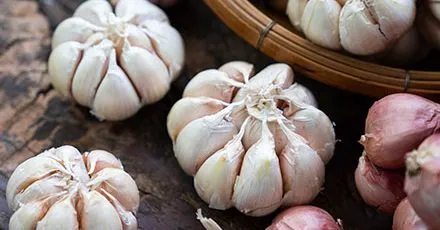
Precautions and Potential Side Effects
While garlic is a potent remedy, its heating nature can cause side effects in some individuals, especially when consumed on an empty stomach. Dr. Faisal notes that people with low tolerance to garlic’s heat may experience skin irritation, headaches, stomach discomfort, or mouth sores. Those with Pitta-dominant constitutions or conditions like acid reflux should exercise caution, as garlic can exacerbate these issues.
Individuals on blood-thinning medications, such as warfarin, should avoid raw garlic due to its anticoagulant properties, which could increase bleeding risk. A 2022 study in Pharmacological Research warns that excessive garlic intake may interact with certain medications, emphasizing the need for moderation. Pregnant women and those with sensitive stomachs should consult a healthcare provider before adopting this practice.
Also Read: 10 Soups to Cure Cold and Cough Fast
Ayurvedic Methods to Enhance Garlic Tolerance
To mitigate garlic’s heating effects, Ayurveda recommends combining it with cooling substances like milk. The method, known as Lashuna Ksheera Pakka, involves boiling garlic cloves in milk to reduce their potency while retaining medicinal benefits. This preparation is gentler on the stomach and suitable for those with sensitive digestion or Pitta imbalances.
To prepare, boil 1–2 crushed garlic cloves in a cup of milk for 5–7 minutes, then strain and consume warm. This method neutralizes garlic’s sharpness, making it easier to digest while preserving its immune-boosting and detoxifying properties. Alternatively, consuming garlic with a teaspoon of ghee or honey can also balance its heat, as suggested in Ayurvedic texts.
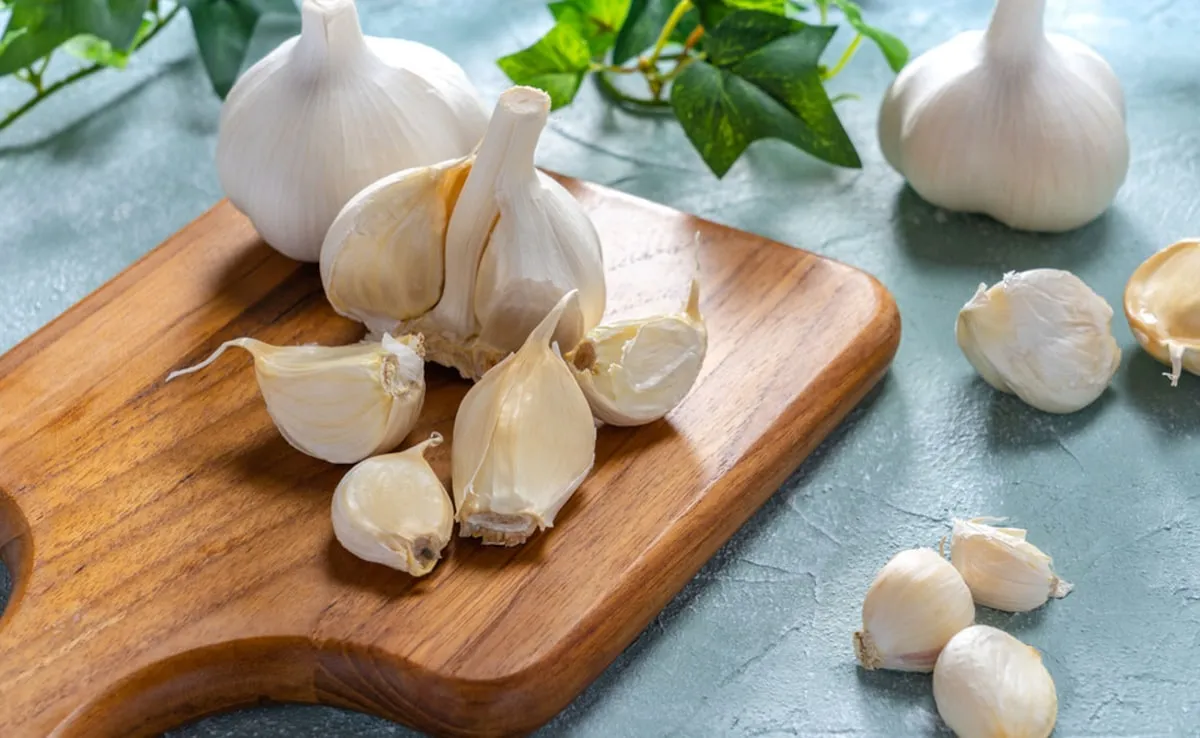
How Much Garlic Is Safe to Consume?
Dosage is critical when consuming raw garlic on an empty stomach. Dr. Faisal recommends starting with 1–6 grams of raw garlic paste (about 1–2 small cloves) daily. In winter, when digestion is typically stronger, the dosage can be increased to 10–50 cloves (100–150 grams) for those with robust health, but this should be done gradually to assess tolerance.
Begin with a small amount, such as half a clove, and monitor for side effects like stomach irritation or bad breath. Pairing garlic with milk or ghee can reduce these effects. For those new to this practice, apps like MyFitnessPal can help track intake and ensure moderation. Overconsumption can lead to digestive issues or excessive blood thinning, so consulting an Ayurvedic practitioner is advised for personalized guidance.
Who Should Eat Garlic on an Empty Stomach?
This practice is best suited for specific groups, including:
People with High Blood Pressure: Garlic’s ability to lower blood pressure makes it beneficial for hypertensive individuals, as supported by a 2018 study in the Journal of Hypertension.
Those Aiming for Weight Loss: Garlic’s metabolism-boosting properties support fat reduction, ideal for those managing obesity.
Individuals with Strong Digestion: Those with robust agni can tolerate raw garlic’s intensity without discomfort.
People Seeking Blood-Thinning Benefits: Garlic’s anticoagulant properties improve circulation, but this excludes those on blood-thinning medications.
Conversely, individuals with sensitive stomachs, Pitta imbalances, or those on medications like warfarin should avoid this practice or consult a doctor. Pregnant women and those prone to allergies should also seek professional advice before starting.
Integrating Garlic into a Healthy Lifestyle
To maximize garlic’s benefits, pair it with a balanced diet rich in whole foods like vegetables, pulses, and millets. Ayurveda recommends consuming garlic as part of a holistic lifestyle that includes adequate sleep (7–8 hours), regular exercise, and stress management through practices like yoga or meditation. These habits enhance garlic’s effects on immunity, digestion, and heart health.
For those hesitant about raw garlic’s strong flavor, try incorporating it into meals later in the day, such as in soups or stir-fries, after starting with a small morning dose. Apps like HealthifyMe can help track dietary habits and ensure garlic complements a nutrient-rich diet. Consulting an Ayurvedic practitioner or nutritionist can further tailor this practice to individual needs, ensuring safety and efficacy.
Comment / Reply From
No comments yet. Be the first to comment!

